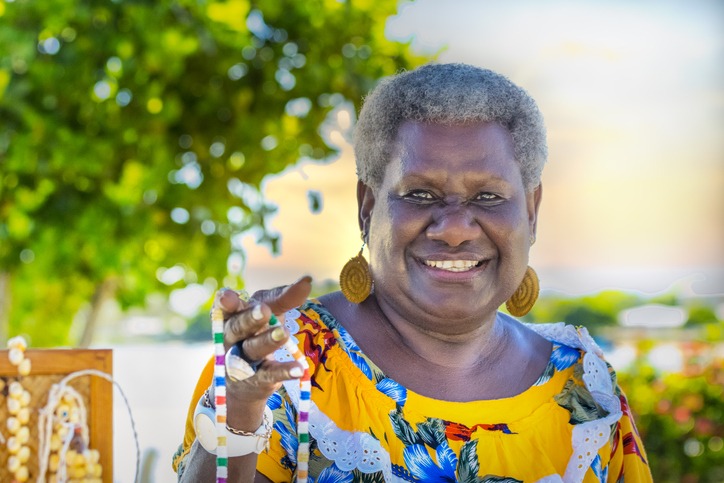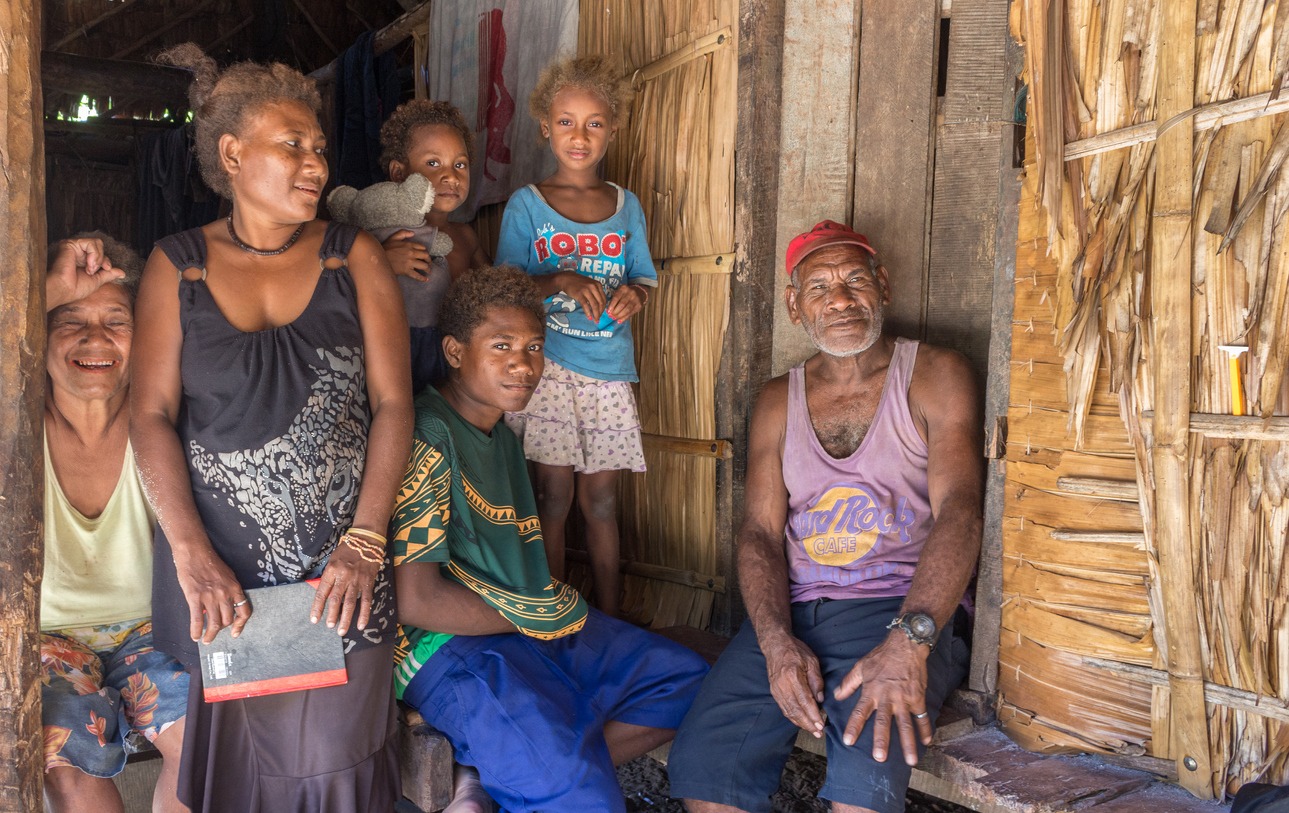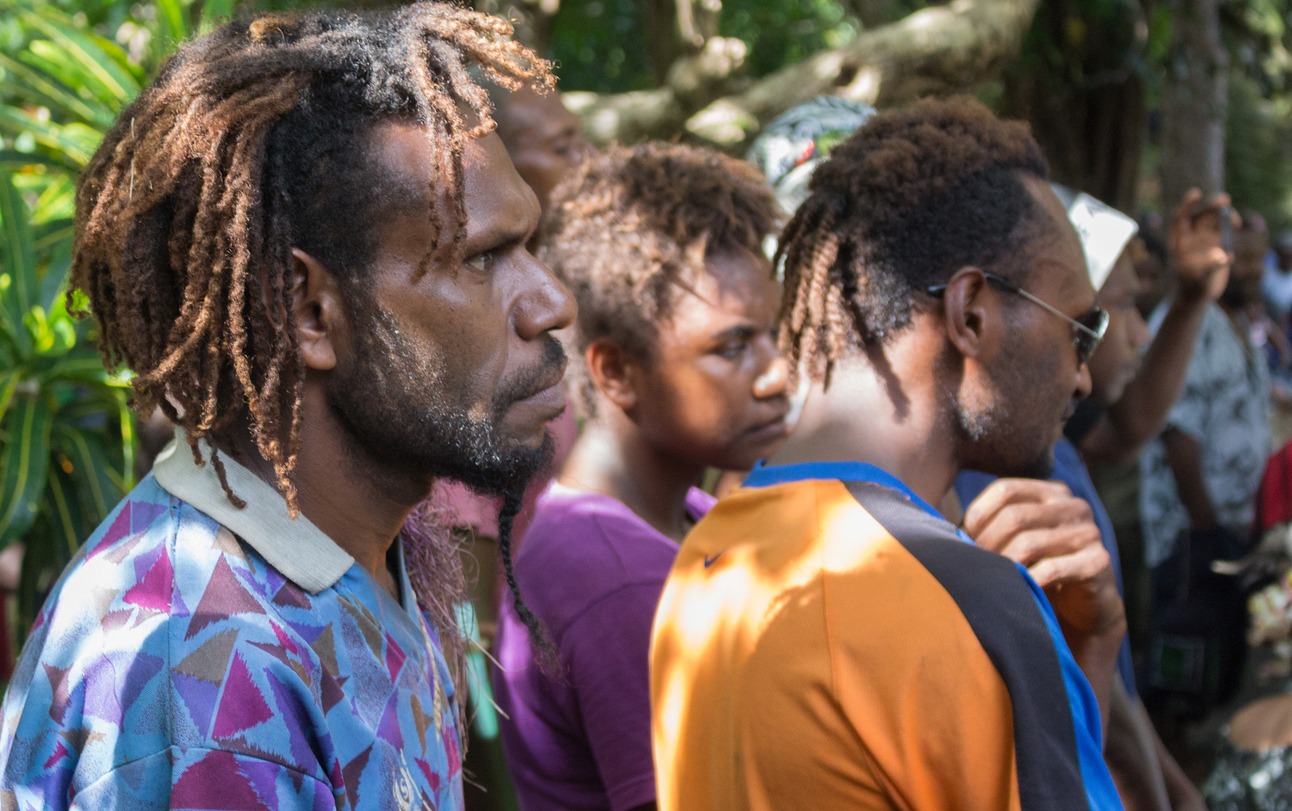Blonde hair is typically associated with populations in Northern Europe, but a fascinating exception can be found in the Solomon Islands, where a significant number of the Melanesian population naturally have blonde hair. This unique genetic trait has intrigued scientists and anthropologists alike, sparking numerous studies to understand its origins. In a region predominantly characterized by dark-haired individuals, this distinct blonde hair stands out, raising questions about its genetic and cultural implications.
Our article delves into the mystery of why Melanesians in the Solomon Islands have blonde hair. We explore the genetic factors behind this rare trait, its cultural significance within Melanesian communities, and how it challenges common perceptions of ethnic and genetic identity. By shedding light on this topic, we aim to provide a clearer understanding of the diversity and complexity inherent in human genetics and cultural expression.
Understanding Melanesia and the Solomon Islands
The Solomon Islands, a sovereign state in the South Pacific, forms part of Melanesia, a region in Oceania known for its remarkable ethnic and cultural diversity. This archipelago, located east of Papua New Guinea, is composed of hundreds of islands, each boasting lush rainforests, vibrant coral reefs, and a rich array of wildlife. The geography of these islands, ranging from large landmasses to tiny atolls, has played a crucial role in shaping the distinct cultures and lifestyles of their inhabitants.
The People of Melanesia
Melanesia, characterized by its diverse population, is home to a wide array of ethnic groups, each with its own unique languages and customs. In the Solomon Islands, this diversity is particularly pronounced, with over 70 indigenous languages spoken. The Melanesian people, known for their distinct physical features and rich cultural heritage, have a deep connection to their land and sea, which is reflected in their traditional practices and beliefs.
A Glimpse into History
The history of the Solomon Islands is as varied as its landscape. Inhabited for thousands of years, these islands have a rich pre-colonial history marked by intricate social structures and thriving trade networks. The arrival of Europeans in the 16th century introduced a new chapter characterized by colonization and the eventual struggle for independence. Understanding this historical context is essential in appreciating the contemporary cultural and social dynamics of the region.
Modern Melanesian Society
In contemporary times, the Solomon Islands balance traditional Melanesian ways of life with the influences of modernization. Village life remains at the heart of Melanesian society, with a strong emphasis on community, kinship, and a deep connection to ancestral land. However, the islands are also navigating the challenges of modernity as globalization and technological advancements bring about significant social and economic changes.
Environmental Interplay
The environment plays a pivotal role in the life of Melanesians. The islands’ diverse ecosystems provide not only sustenance but also form the basis of many cultural and spiritual beliefs. The people’s relationship with the ocean is particularly integral, influencing everything from diet to mythology. However, environmental challenges such as climate change and resource depletion pose significant threats to their traditional way of life.
This overview of Melanesia and the Solomon Islands lays the foundation for understanding the unique phenomenon of blonde hair among the Melanesian population. It underscores the importance of considering genetic traits within the broader tapestry of cultural, historical, and environmental contexts.
The Genetic Mystery of Blonde Hair in Melanesia
The occurrence of naturally blonde hair among the Melanesian population of the Solomon Islands stands as a fascinating genetic mystery. Unlike the blonde hair commonly seen in European populations, which is typically associated with a variety of genes and environmental factors, the blonde hair found in Melanesia is distinct both in its appearance and genetic origin.
Debunking Myths and Misconceptions
Common misconceptions have often attributed the blonde hair in Melanesian populations to a variety of non-genetic factors, such as sun exposure, diet, or even historical intermarriage with Europeans. However, recent genetic studies have debunked these myths, confirming that the blonde hair in Melanesia has a unique genetic basis entirely separate from European influences.
The Role of the TYRP1 Gene
Central to solving this puzzle is the TYRP1 gene. Research has identified a specific gene mutation responsible for the blonde hair seen in the Melanesian population. This mutation affects the production of melanin, the pigment responsible for hair and skin color, leading to the distinctive blonde hair. Interestingly, this mutation is not found in other populations with a high prevalence of blonde hair, indicating a separate evolutionary path.
Genetic Studies and Findings
A closer look at the various genetic studies that led to the discovery of the TYRP1 gene mutation provides insight into the complexity of human genetics. These studies not only shed light on the genetic diversity within the Melanesian population but also contribute to the broader understanding of human evolution and genetic variation.
Implications of the Research
The discovery of the genetic basis for blonde hair in Melanesia has broader implications for our understanding of human genetics. It challenges the notion of genetic traits being confined to specific racial or ethnic groups and highlights the extraordinary diversity within human populations. This research also underscores the importance of studying diverse populations to gain a more comprehensive view of human genetics.
The presence of blonde hair among the Melanesian population in the Solomon Islands is proof of the complexity and diversity of human genetics. The discovery of the TYRP1 gene mutation not only solves a long-standing mystery but also enriches our understanding of human evolution and genetic diversity.
The TYRP1 Gene and Its Role
The key to understanding the unique blonde hair in Melanesian populations lies in a specific gene known as TYRP1 (Tyrosinase-related protein 1). This gene plays a crucial role in the development of melanin, the pigment that gives color to our hair, skin, and eyes. In most populations, variations in melanin production led to differences in these features. However, the manifestation of blonde hair in the Melanesians is due to a specific mutation in the TYRP1 gene, which is not found in other populations.
The Mutation and Melanin Production
The mutation in the TYRP1 gene leads to a reduction in melanin in the hair, resulting in the blonde color. Unlike other genes associated with blonde hair in European populations, the TYRP1 mutation does not significantly affect the melanin in the skin, which is why Melanesians with blonde hair also have dark skin. This selective effect on hair pigment is a fascinating aspect of this genetic trait and highlights the complex nature of genetic expression.
Comparison with Other Populations
Intriguingly, the blonde hair resulting from the TYRP1 mutation in Melanesians is genetically distinct from blonde hair in European populations, which is usually influenced by different genes and genetic pathways. This distinction is an important reminder of the diversity of genetic mechanisms that can produce similar physical traits in different populations.
Insights from Genetic Research
Genetic research into the TYRP1 mutation has provided valuable insights into not only the biology of hair color but also the broader patterns of human evolution and migration. The discovery that this genetic trait arose independently in Melanesia underscores the rich tapestry of human genetic diversity and adaptation.
Cultural and Anthropological Significance
Beyond its biological significance, the study of the TYRP1 gene and its role in Melanesian blonde hair also holds cultural and anthropological importance. Understanding the genetic basis of this trait provides a scientific perspective on the diverse expressions of human physical features, challenging outdated notions of race and ethnicity based on superficial characteristics.
The TYRP1 gene’s role in creating the unique blonde hair among Melanesians not only unravels a genetic mystery but also enriches our understanding of human diversity. It serves as a powerful example of the intricate ways in which genetics can shape our physical appearance and how these features are woven into the fabric of cultural identity.
Cultural Significance and Identity
In Melanesian societies, hair is not just a physical attribute but a symbol imbued with cultural and social significance. It often represents one’s identity, social status, and even spiritual beliefs. The unique phenomenon of blonde hair among Melanesians, therefore, holds a special place in their cultural narrative. This section delves into how this distinct trait is perceived and valued within Melanesian communities.
Blonde Hair as a Marker of Identity
For Melanesians with blonde hair, this trait is a marker of identity that distinguishes them within their communities and beyond. It’s seen as a natural part of their heritage, a unique characteristic that has been passed down through generations. The prevalence of blonde hair in certain areas of the Solomon Islands has also become a point of local pride and a defining feature of these communities.
Cultural Practices and Traditions Involving Hair
Traditional practices and rituals often center around hair in many Melanesian societies. Ceremonies such as coming-of-age rituals, marriages, and even mourning practices can involve specific hairstyles or treatments. The presence of blonde hair adds a unique dimension to these practices, reflecting the diversity within these traditions.
Personal Stories and Perspectives
Personal narratives from individuals in the Melanesian community provide a deeper understanding of what blonde hair means to them. Interviews or anecdotes from Melanesians can illuminate how they view their blonde hair in the context of their cultural identity and daily life. These stories can reveal the pride, challenges, and experiences associated with this distinctive trait.
Impact on Perceptions of Beauty and Diversity
The existence of naturally blonde hair in a predominantly dark-haired population challenges traditional perceptions of beauty and diversity. It underscores the fact that beauty standards are culturally constructed and can vary significantly from one society to another. In Melanesia, blonde hair is often celebrated as a natural and beautiful part of the human tapestry, contributing to a broader understanding of beauty and diversity.
The cultural significance of blonde hair in the Solomon Islands highlights the importance of understanding and respecting the diverse ways in which different societies perceive and value physical traits. Through exploring the cultural and personal dimensions of blonde hair in Melanesia, we gain insight into the broader themes of identity, beauty, and the diversity of the human experience.
Influence on Fashion and Global Perception
The unique phenomenon of naturally blonde hair among Melanesians has not only captured the attention of geneticists and anthropologists but has also made a distinct mark in the world of fashion. Designers and stylists, drawn to the striking contrast between dark skin and light hair, have found inspiration in this natural trait.
Global Perception and Media Representation
The visibility of Melanesian blonde hair in global media has played a significant role in shaping perceptions of beauty and diversity. This rare trait challenges the often narrow, Eurocentric standards of beauty that dominate mainstream media. By highlighting the natural beauty of Melanesian people in international platforms, including magazines, fashion shows, and social media, there is an increasing acknowledgment and appreciation of diverse beauty standards and the myriad ways in which they are expressed.
Melanesian Blonde Hair in Art and Photography
Artists and photographers have also been captivated by the beauty of Melanesian blonde hair, often featuring it in their works. These artistic representations contribute to a broader understanding and acceptance of this unique trait, encouraging a dialogue about diversity and the representation of different cultures in art. Through these mediums, the story of Melanesian blonde hair reaches a wider audience, fostering a greater appreciation for cultural diversity.
Impact on Local and Global Beauty Standards
The visibility of Melanesian blonde hair has had a ripple effect on beauty standards around the world. It challenges the homogeneity of beauty ideals and encourages a more inclusive understanding of attractiveness. This shift is significant not only for Melanesians but also for all individuals who do not conform to traditional beauty norms, empowering people to embrace their unique features.
Promoting Cultural Diversity and Acceptance
The global interest in Melanesian blonde hair goes beyond mere aesthetics; it also plays a crucial role in promoting cultural diversity and acceptance. By bringing attention to the unique genetic and cultural attributes of the Melanesian population, it fosters a greater appreciation for the rich tapestry of human diversity. This increased awareness helps combat stereotypes and encourages a more nuanced understanding of different ethnic and cultural backgrounds.
The influence of Melanesian blonde hair on fashion and global perception is a powerful example of how a unique genetic trait can transcend its biological origins to impact cultural and aesthetic realms.
Conclusion
In exploring the unique phenomenon of blonde hair among the Melanesian population in the Solomon Islands, we’ve journeyed through a fascinating intersection of genetics, culture, and global perception. This journey highlights the importance of understanding the diverse ways in which human traits are manifested and the significance they hold in different cultures.
The genetic mystery of the TYRP1 gene and its role in this distinctive hair color not only provides insight into the complexities of human genetics but also celebrates the rich tapestry of human diversity. Through examining the cultural significance and the influence on fashion and global perceptions, we see how a single genetic trait can have far-reaching implications, challenging traditional beauty standards and promoting a broader appreciation for diversity.
Ultimately, the story of Melanesian blonde hair is a reminder of the beauty and complexity inherent in our shared human experience.


